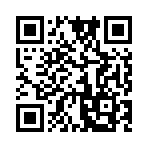safe.JSStr
Syntax
Returns
Alias
Introduction
Hugo uses Go’s text/template and html/template packages.
The text/template package implements data-driven templates for generating textual output, while the html/template package implements data-driven templates for generating HTML output safe against code injection.
By default, Hugo uses the html/template package when rendering HTML files.
To generate HTML output that is safe against code injection, the html/template package escapes strings in certain contexts.
Usage
Use the safe.JSStr function to encapsulate a sequence of characters meant to be embedded between quotes in a JavaScript expression.
Use of this type presents a security risk: the encapsulated content should come from a trusted source, as it will be included verbatim in the template output.
See the Go documentation for details.
Example
Without a safe declaration:
{{ $title := "Lilo & Stitch" }}
<script>
const a = "Title: " + {{ $title }};
</script>Hugo renders the above to:
<script>
const a = "Title: " + "Lilo \u0026 Stitch";
</script>To declare the string as safe:
{{ $title := "Lilo & Stitch" }}
<script>
const a = "Title: " + {{ $title | safeJSStr }};
</script>Hugo renders the above to:
<script>
const a = "Title: " + "Lilo & Stitch";
</script>